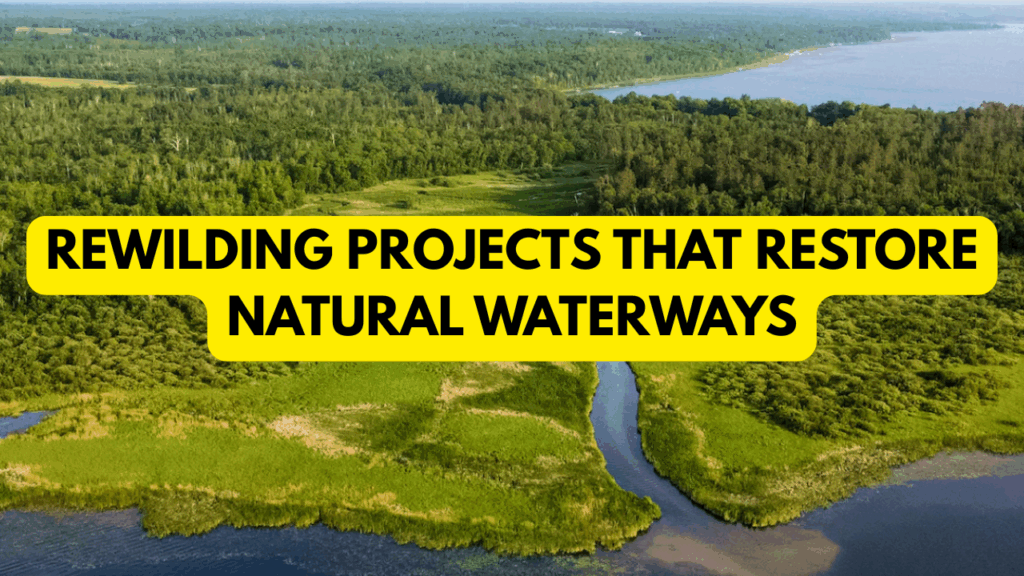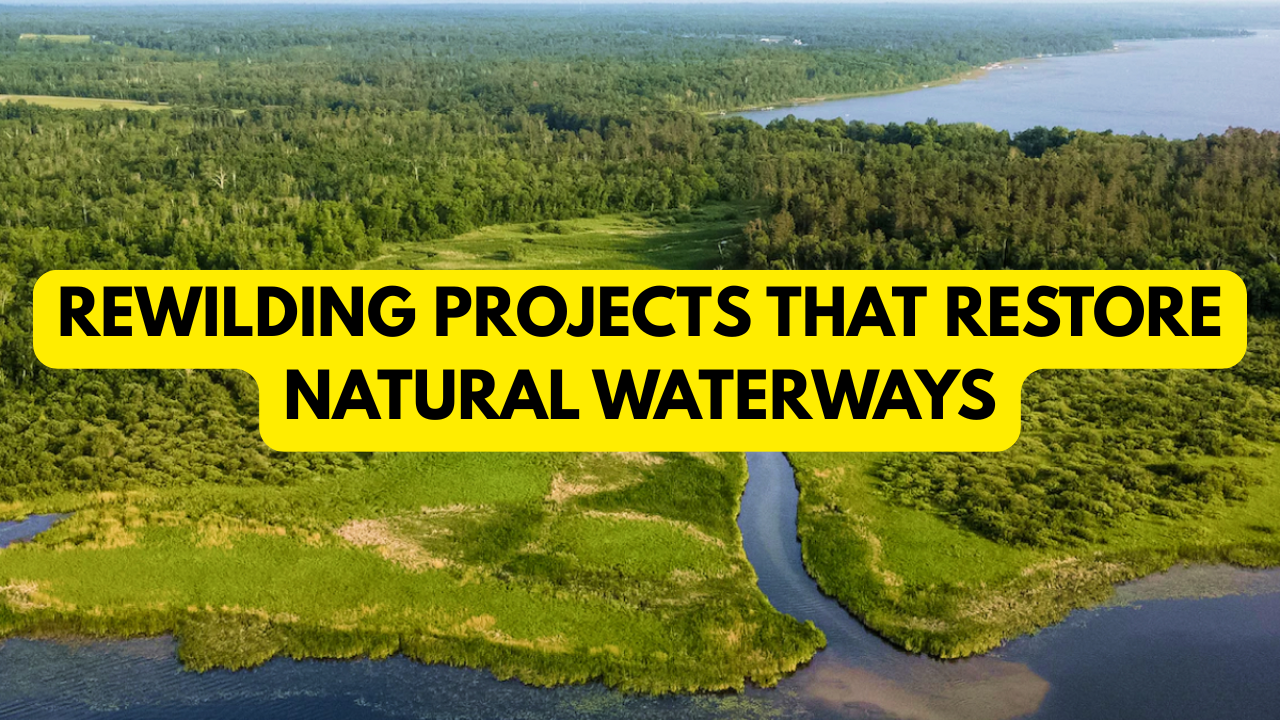
Rewilding has emerged as a powerful environmental strategy to heal damaged ecosystems. At its core, rewilding focuses on letting nature restore itself by removing human interference and reintroducing native species. One of the most impactful areas of rewilding is restoring natural waterways, where rivers, wetlands, and streams are allowed to flow freely again. These projects not only bring ecological benefits but also improve water quality, biodiversity, and community resilience.
What Is Rewilding Waterways?
Rewilding waterways means returning rivers and wetlands to their natural state by:
- Removing dams and barriers to allow natural flow.
- Reintroducing vegetation and wildlife to riverbanks.
- Restoring floodplains to reduce erosion and flooding risks.
- Reducing pollution and agricultural runoff.
This approach provides a sustainable alternative to heavily engineered water management, allowing ecosystems to adapt and thrive naturally.
Why Waterway Rewilding Matters
- Improved Water Quality
Natural waterways filter pollutants and sediments more effectively than artificial systems. - Biodiversity Boost
Fish, birds, and amphibians return to habitats once destroyed by human activity. - Flood Control
Healthy floodplains absorb excess water, reducing flood risks to communities. - Climate Resilience
Restored waterways store carbon in wetland vegetation and soils. - Cultural and Community Value
Rewilded rivers provide recreation, tourism, and a renewed connection with nature.
Successful Rewilding Projects Worldwide
- Elwha River, USA
The removal of two large dams allowed salmon populations to rebound, restoring a cultural and ecological lifeline for local tribes. - UK’s River Restoration Projects
Rivers like the Thames and River Wye have benefited from initiatives that reconnect floodplains and clean polluted waters. - European Beaver Reintroduction
Beavers have been reintroduced in Scotland, Germany, and other regions. Their dam-building helps slow water flow and improve habitats. - China’s Wetland Rewilding
Projects in the Yangtze River Basin restore wetlands to reduce flood risk and improve water supply for millions. - India’s Ganges Rejuvenation Efforts
Community-led clean-ups and ecological restoration aim to reduce pollution and restore the spiritual and ecological importance of the Ganges.
Key Benefits of Waterway Rewilding
| Benefit | Impact on Ecosystem | Impact on People |
|---|---|---|
| Water purification | Natural filtering of pollutants | Cleaner drinking water |
| Habitat restoration | Return of fish, birds, and mammals | Boosts tourism and local economy |
| Flood protection | Floodplains absorb excess water | Reduced disaster costs |
| Climate change mitigation | Wetlands store large amounts of carbon | Stronger climate resilience |
| Cultural value | Revives traditional practices | Strengthens community bonds |
| Recreation and tourism | Richer natural landscapes | Opportunities for eco-tourism |
Challenges in Waterway Rewilding
- Urban Development Pressure: Expanding cities reduce space for rivers to flow naturally.
- Funding Limitations: Large-scale restoration projects require sustained investment.
- Pollution Sources: Industrial and agricultural runoff continue to damage waterways.
- Public Resistance: Communities may be skeptical about removing dams or altering land use.
- Climate Change Impacts: More extreme floods and droughts complicate restoration efforts.
Overview Table
| Project | Country/Region | Main Focus |
|---|---|---|
| Elwha River Restoration | USA | Dam removal, salmon return |
| River Wye & Thames Projects | UK | Pollution clean-up, floodplain reconnection |
| Beaver Reintroductions | Europe | Natural water management, habitat creation |
| Yangtze Wetland Rewilding | China | Flood risk reduction, freshwater supply |
| Ganges River Rejuvenation | India | Pollution control, cultural restoration |
How Communities Can Support Rewilding
- Volunteer in Clean-Up Projects: Local groups often organize riverbank clean-ups.
- Support Policy Changes: Advocate for removal of obsolete dams and wetland protections.
- Eco-Friendly Practices: Reduce plastic use, pesticides, and chemical runoff.
- Citizen Science: Participate in monitoring water quality and wildlife return.
- Promote Eco-Tourism: Visit rewilding sites that encourage sustainable tourism.
Final Thoughts
Rewilding natural waterways is more than an environmental project—it’s a path to healing our planet and communities. By restoring rivers and wetlands, we not only safeguard biodiversity but also secure clean water, climate resilience, and cultural heritage. As successful projects worldwide show, when nature is given the chance, it comes back stronger than ever.
FAQs
Q1: Why is removing dams important for rewilding rivers?
Because it restores natural water flow, allowing fish and ecosystems to recover.
Q2: How does rewilding help prevent floods?
Restored floodplains absorb and slow down excess water, reducing flood risks.
Q3: Can rewilding projects benefit local economies?
Yes, they attract eco-tourism, fishing, and recreation, supporting community livelihoods.

